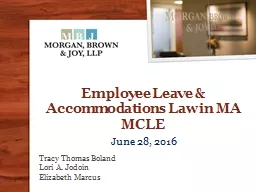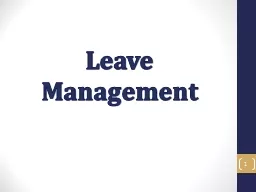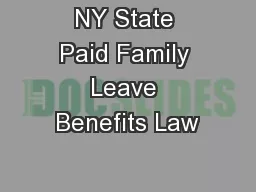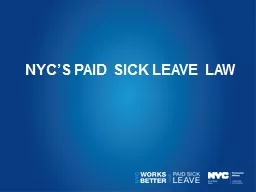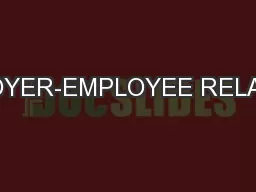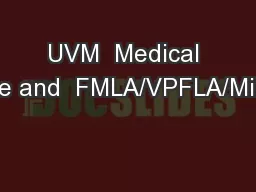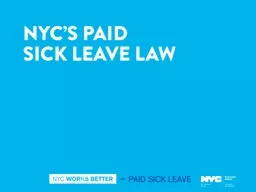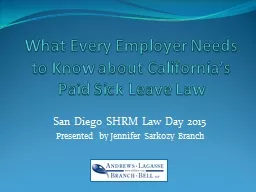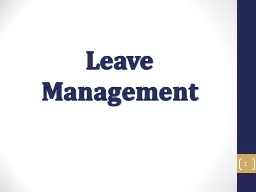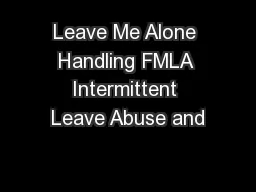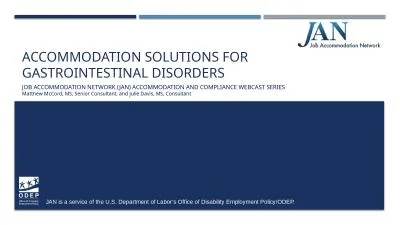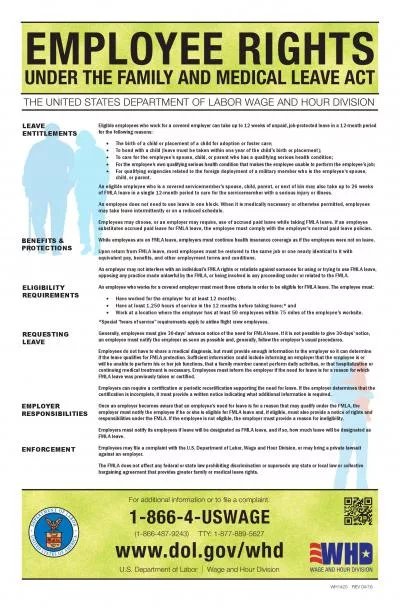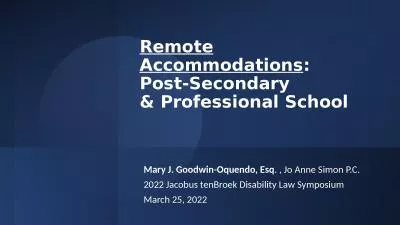PPT-Employee Leave & Accommodations Law in MA
Author : luanne-stotts | Published Date : 2020-04-05
MCLE Tracy Thomas Boland Lori A Jodoin Elizabeth Marcus June 28 2016 Goals And Objectives Understand the nuts and bolts of the leave laws that apply in MA Learn
Presentation Embed Code
Download Presentation
Download Presentation The PPT/PDF document " Employee Leave & Accommodations Law..." is the property of its rightful owner. Permission is granted to download and print the materials on this website for personal, non-commercial use only, and to display it on your personal computer provided you do not modify the materials and that you retain all copyright notices contained in the materials. By downloading content from our website, you accept the terms of this agreement.
Employee Leave & Accommodations Law in MA: Transcript
Download Rules Of Document
" Employee Leave & Accommodations Law in MA"The content belongs to its owner. You may download and print it for personal use, without modification, and keep all copyright notices. By downloading, you agree to these terms.
Related Documents

